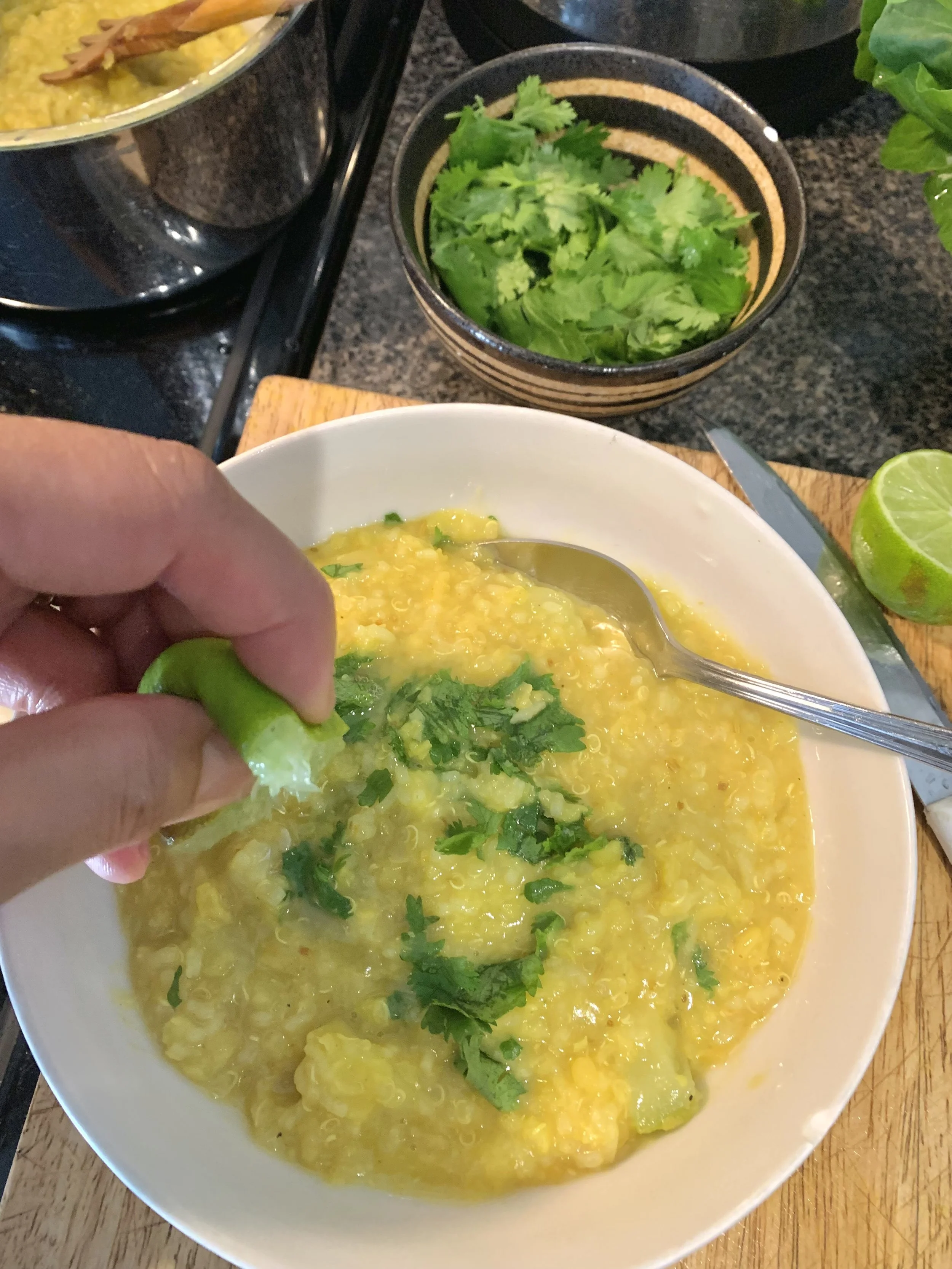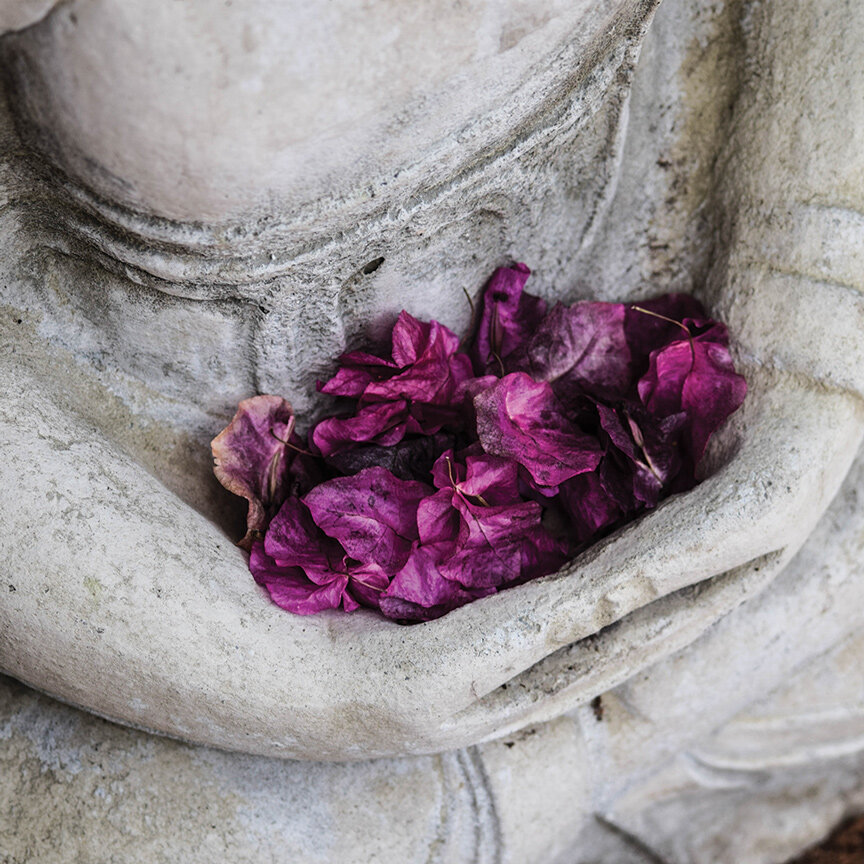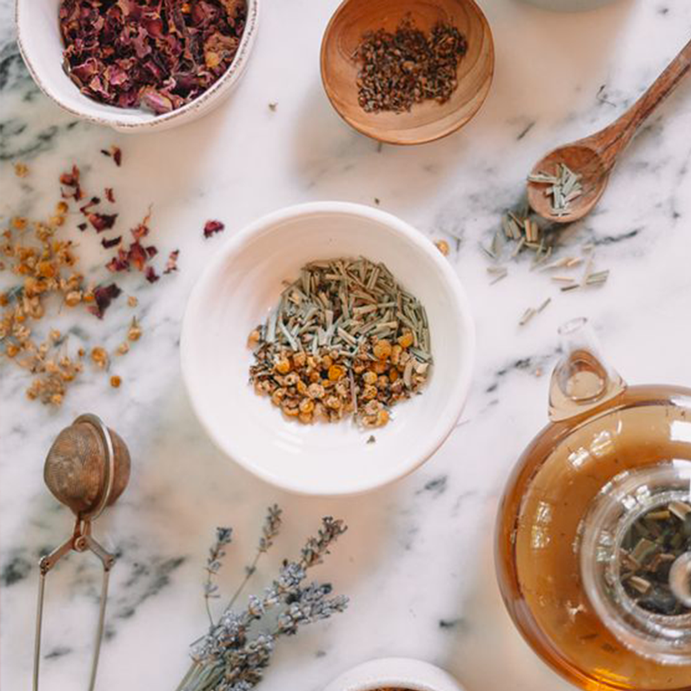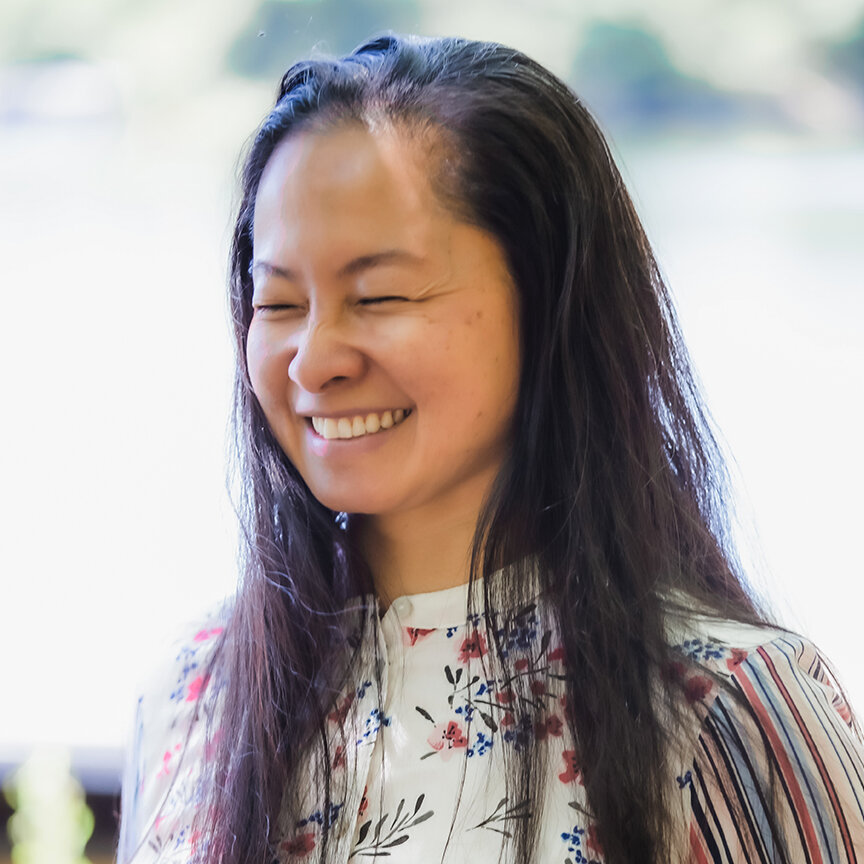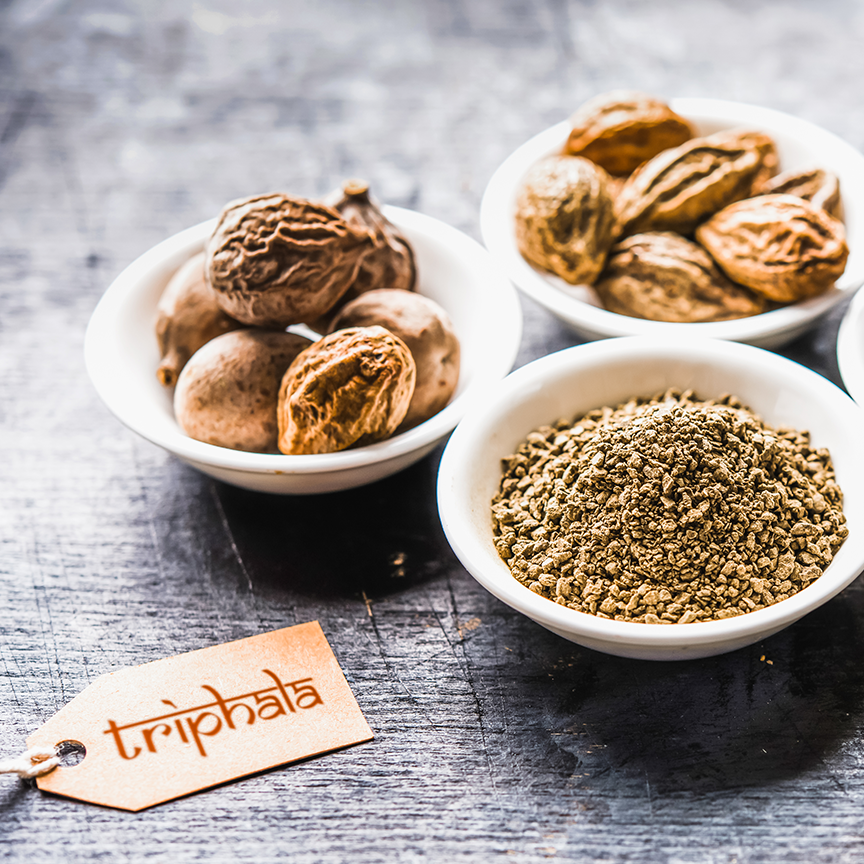THE SCIENCE OF LIFE
Yoga & Ayurveda
Balance within
As sister sciences, Yoga and Ayurveda can help put our lives into perspective in order to maintain physical, mental and emotional balance. Ayurveda means the science of life and is one of the oldest health systems and uses the principles of nature to promote a long, healthy life and to prevent and treat disease. Yoga is more than just physical postures. Yoga means union and it outlines the methods and the practices to liberate the mind from distractions, creating the path to uniting with our peaceful, loving, divine nature. Today, we can use Ayurveda with Yoga and meditation to support our wish for a healthy, vibrant, meaningful life. This is the bridge between ancient practices and modern life.

balance & Well-being
Ayurveda Treatments
Ayurvedic nutrition consult - in clinic or on-line
“Prana is the ultimate healer”. Your in-clinic initial consult includes a pulse assessment, and an evaluation of your health history, lifestyle and diet. Working from the Ayurvedic principle of “hetu”, getting to the root cause(s) of symptoms, you will be provided with a personalized health plan to relieve symptoms by balancing your doshas- vata, pitta, kapha with diet, routine, teas, spices, yoga and bodywork.
1 hour | $120
FREE AYURVEDIC COOKING WEBINARS
“Let food be thy medicine and medicine be thy food.” - Hippocrates
An excellent introduction to the principles of Ayurveda, giving you a taste of the Seasonal Workshops - a series of four live webinar classes each season to balance, heal and align with your best self each and every season.
AYURVEDIC OIL massage and marma Treatment
Experience the powerful effects of a combination treatment with transdermal marma therapy and massage. Your treatment begins with a pulse reading, followed by a warm oil massage and marma treatment with Ayurvedic herbal creams. Marma means “of a mystical nature”, and are energy points on the body that connect the nadis (energy channels), the chakras (energy centres), and all the organs and systems of the body. One of the most popular treatments I offer.
75-minutes | $140
ayurvedic NUTRITION & Yoga consultation - in clinic or online
Ayurveda, considered the “mother of all healing” recognizes that proper diet, routine & detoxification, sleep and balanced activities are foundations to maintaining physical, mental and emotional health. Your consult evaluates your health history, with diet and lifestyle habits to arrive at a personalized plan to nurture your body, mind and spirit through food, teas, spices and herbs, yoga, exercise and self-care tailored to align with your best self.
90 minutes | $160
Ayurvedic Head Massage
This treatment focuses on the areas most prone to tension; the face, neck, head and jaw, and is a powerful treatment to aid restful sleep, relieve stress and clear the mind. This relaxing massage also balances energy throughout the entire body.
30-minutes | $80
SVA Samadhi Marma and Eye Treatment
With many of us working in front of a computer this deeply relaxing signature treatment of the SVA lineage coupled with transdermal marma for the eyes is the perfect combination. For relief of tired, heavy eyes and relaxing for the mind. Marma points of the upper body enhance the flow of prana in targeted areas that are over stimulated in our technological world. Clients have responded with saying, “…feeling so peaceful”, “more relaxing than massage”, my eyes feel better”. Marma means “of a mystical nature”, and are energy points on the body that connect the nadis (energy channels), the chakras (energy centres), and all the organs and systems of the body.
30-minutes | $80
Transdermal Marma Therapy Treatment
During a marma treatment energy points are gently touched to enhance the reception, flow and distribution of energy/prana throughout the body. A deeply therapeutic treatment of the SVA lineage that can help remove energy blockages and release accumulated stress and tension with application of herbal creams to specific points. Creams include brahmi for mind, ashwaghanda for stress, deglycyrrhizinated licorice (DGL) to cool the liver, and arjuna or ashoka for emotional relief. Herbal creams and oils used in all Ayurvedic treatments are creations of renowned Ayurvedic doctor, formulator and researcher Vaidya Rama Kant Mishra.
30-minutes | $80
60-minutes | $120
90-minutes | $160
Full Body Abhyanga Oil Massage
Enjoy a full body massage with warm herbal oils designed to balance your doshas. Abhyanga massage stimulates the lymphatic and circulatory systems, reduces sympathetic nervous system activity to help relax the mind, and rejuvenates the whole body helping reduces muscle stiffness and joint pain, facilitate removal of toxins through elimination channels, and improve health of the skin.
60-minutes | $120
Deep Tissue Massage
Deep tissue massage, or vishesh, works the deeper parts of your muscles using more pressure and a firmer grip. This massage works powerfully to relieve stress, eliminate pain and help mobility with long-lasting results.
60-minutes | $120
“These treatments have been full of care, which I have found to be nurturing and rejuvenating. Evangeline takes a personal interest in your health. While in her care, she ensures that you feel the full physical and mental benefit of her professional attention. ”


Movement is Medicine
Yoga
“I am loving the virtual Yoga classes with Evangeline and look forward to Wednesday as my weekly routine. I have never taken yoga classes before and I am finding it is benefitting me, in mind, body and spirit.”
yoga on the dock
Available in the summer months in Muskoka, Ontario.
60-minutes | $120 CAD
therapeutic yoga
These private sessions are tailored to your personal needs. Your range of motion and functional movements are addressed with yoga postures, breath work and meditation techniques to achieve your goals. These sessions also offer an opportunity to relax, rejuvenate and experience peace of mind.
60-minutes | $120 CAD
“Like a flower bud, human life has the potential to blossom fully. Blossoming of human potential to fullness is yoga.”

Ancient Holistic Health
About Ayurveda
Imagine a balanced, harmonious life, where health is not confusing or complicated, which it can be in this digital age. In Ayurveda, health is aligned with the laws of nature. Aligning with nature’s rhythms, and understanding a few of its basic laws, gradually gives way to health. Ayurveda is an ancient healing system to maintain a balanced, healthy life, and improve the quality of our health and prevent disease. Ayu means life and ved means science. By definition, Ayurveda is the science or knowledge of life. Ayurvedic practices and treatments work from the inside out, bringing body and mind into harmony so we can enjoy life with energy and enthusiasm.
Ayurveda understands the physical, mental, emotional and spiritual health and wellbeing of each individual as being unique. In Ayurveda, all the functions of the body and mind are governed by the 3 doshas- vata, pitta and kapha. Vata governs movement, flow and timing of everything in the body, pitta governs transformation and metabolism and kapha governs the structure, stability and fluids. Each dosha has 5 subdoshas, resulting in 15 subdoshas, each governing an area of the body. The actions of the doshas are influenced by the five fundamental elements of nature - space, air, fire, water, earth.
We have a physical body nourished by food and supported by lifestyle choices. Vibrational energy that we receive from the cosmos, called prana, flows through our physical body via vibrational channels called nadis. In Traditional Chinese Medicine nadis are called meridians. Prana is one of the fundamental principles of Ayurveda and is identified as the main pillar of life. Food, sleep and following the laws of nature are the three sub-pillars. Prana is made up of three vibrational energies identified in the ancient Ayurvedic texts as soma and agni which come from the moon and the sun respectively and the third component, marut, allows for the movement and circulation of soma and agni. Prana is the fundamental life force and is in the air we breathe, the water we drink and from the food we eat. Prana infuses life into everything on Earth. In Traditional Chinese Medicine prana is called chi.
When you book in for an appointment or attend a live webinar or take a course, special attention is placed on the season, diet, spices & herbs, and lifestyle to ensure a balanced and harmonious interaction between the three doshas.
Kichari - a one pot staple dish in Ayurveda of split lentils or split mung beans cooked with basmati rice. Both nourishing and gentle on digestion.
Frequently Asked Questions
Can I Help?
How does knowing my Dosha help me with my health?
The Ayurvedic doshas: vata, pitta, kapha are a gateway to deeply valuing one’s health. We all have vata, pitta, kapha qualities, with varying degrees of each. By knowing the doshas and their energetic qualities you can acquire a deeper insight on the cause and effect principle of food, environment and behaviour on your health. For example, when you go to bed late, or skip a meal, your vata and pitta energy goes high. With these repeated behaviours, high pitta can manifest symptoms like feeling overly emotional, quick to react or anger; high pitta can also lead to acid stomach or skin problems. High vata can disturb circulation and can lead to increased anxiety, dizziness, headaches or blood pressure issues. By curbing imbalances, we protect our body from developing more serious health problems later on. Disease does not happen overnight. Ayurveda recognizes various stages of disease starting with accumulation, which lead to imbalances. Imbalances left unattended can further develop and manifest as chronic conditions or disease.
How does something as old as Ayurveda help me today?
Though the principles of Ayurveda go back thousands of years, they are still relevant today. The knowledge of Ayurveda is timeless, understood by ancient rishis who were in deep meditation, abiding by the laws of nature and eternal truths. They developed principles on how to live and sustain a healthy life, by living in harmony with nature. For example, these “ancient doctors” we can call them understood that most diseases can be traced back to poor digestion. They also knew that raw, uncooked grains, legumes, vegetables, when eaten raw is difficult to digest therefore need to be cooked. With modern science we know these substances are phytates, lectins, and oxalates which can create digestive and other potential health problems. Even though these ancient sages could not understand this on a microscopic level, they understood these facts nonetheless and were aligned with health-promoting ways of living.
What is the significance of yoga, beyond the postures?
There is more to Yoga than postures. Yoga is derived from the Sanskrit word yuj, which means to yoke, or unite. Yoga can mean different things to people, yet it is very practical. There is known to be six paths to Yoga: Hatha, Raja, Karma, Bhakti, Gyana and Tantra - all leading to self realization.
Yoga existed long, long ago at a time when knowledge was orally passed down, before the time of Patanjali. Maharishi Patanjali, known as the “father of yoga”,organized the knowledge of yoga. Yoga comes from the word yuj which means union. The study of Yoga, as written in the Yoga Sutras of Patanjali outlines the methods and the practices to liberate the mind from distractions, creating a path to uniting with your loving, peaceful self— your true nature. So we can think of Yoga as a very useful manual on how to feel whole, united with our inner peace.
The Yoga Sutras of Patanjali or EightLimbs of Yoga contains 195 aphorisms of how to purify the mind, providing details to an eight-limb path (ashtanga yoga) of self-actualization and inner peace (samadhi). There has been a growing number of research on the physical and mental health benefits of physical postures in Yoga (asanas), breathing exercises (pranayama), and mindfulness and meditation. Maharishi Patanjali lived around the 2 BC and his sutras are commonly cited all over the world to this day.
Patanjali’s Eight Limbs of Yoga
1. Ethical morals- Yama
2. Self-discipline- Niyama
3. Postures- Asana
4. Control of the breath- Pranayama
5. Drawing in the senses- Pratyahara
6. Concentration- Dharana
7. Contemplation and meditation- Dhyana
8. Union with self- Samhadi


















